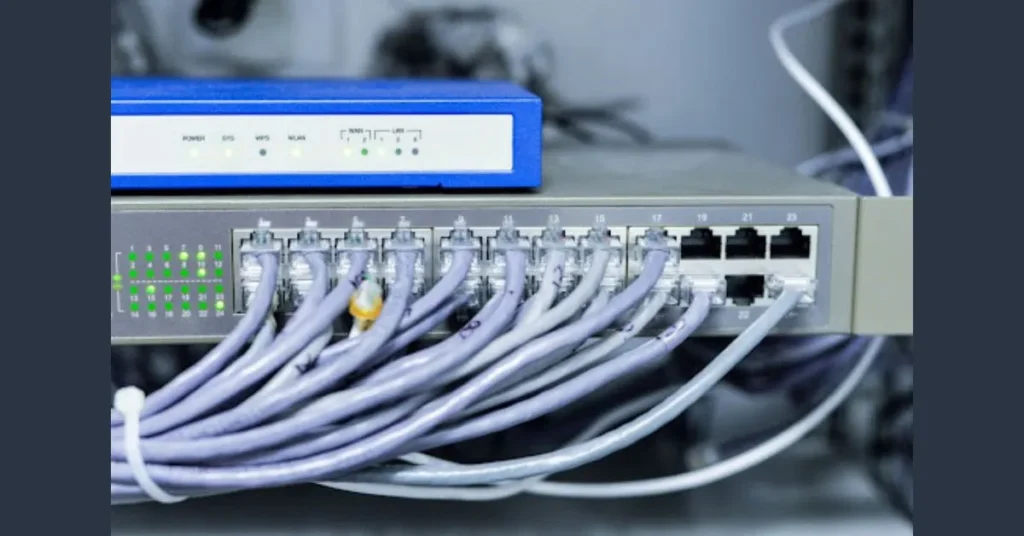In today’s digital age, a reliable infrastructure is the backbone of every successful business operation. Whether you’re a small startup or a large enterprise, the efficiency and performance of your network cabling can significantly impact productivity, communication, and overall business success. Maximizing performance through optimal installation is crucial to ensure seamless connectivity and data transmission within your organization. In this guide, we’ll explore techniques and best practices to achieve optimal installation and elevate your business infrastructure to new heights.
Contents
- Understanding the Importance of Network Cabling
- Assessing Infrastructure Requirements
- Selecting the Right Solution
- Planning Cable Pathways and Layout
- Implementing Proper Management Techniques
- Ensuring Compliance with Industry Standards
- Conducting Rigorous Testing and Certification
- Investing in Professional Installation Services
- Conclusion
Understanding the Importance of Network Cabling
Before delving into installation techniques, it’s essential to grasp the significance of network cabling in modern business environments. Data cabling serves as the physical foundation of your IT infrastructure, facilitating the transmission of data between devices, servers, and networking equipment. A well-designed and properly installed system can enhance reliability, speed, and scalability, enabling your organization to meet the demands of today’s digital landscape.
Assessing Infrastructure Requirements
The first step in maximizing performance through installation is to assess your infrastructure requirements. Conduct a thorough evaluation of your current and anticipated networking needs, including the number of devices, bandwidth requirements, and future expansion plans. By understanding your infrastructure requirements, you can design a system that accommodates present demands while allowing for future scalability and growth.
Selecting the Right Solution
Choosing the appropriate solution is paramount to achieving optimal performance and reliability. Consider factors such as data transmission speed, distance limitations, and environmental conditions when selecting cabling types. Common options include twisted pair copper cables, fiber optic cables, and coaxial cables, each offering unique advantages depending on your specific requirements. Consult with a qualified expert to determine the best solution for your organization’s needs.
Planning Cable Pathways and Layout
Effective planning of cable pathways and layout is essential to ensure efficient installation and minimize potential disruptions. Map out the physical layout of your workspace, identifying optimal routes for cable placement to avoid obstacles and minimize cable length. Utilize cable trays, conduits, and raceways to organize and protect cables, reducing the risk of damage and interference. Proper cable management not only enhances aesthetics but also simplifies maintenance and troubleshooting in the long run.
Implementing Proper Management Techniques
Maintaining tidy and organized cable management is critical for optimizing performance and minimizing downtime. Employ cable management tools such as cable ties, racks, and labels to neatly organize cables and facilitate easy identification. Implementing structured cabling practices adhering to industry standards ensures consistency and reliability across your infrastructure. Properly managed cables not only improve airflow and cooling within equipment racks but also streamline maintenance tasks, saving time and resources.
Ensuring Compliance with Industry Standards
Adhering to industry standards and regulations is imperative to ensure the quality and reliability of your network cabling installation. Compliance with standards such as ANSI/TIA-568 for structured cabling systems and ISO/IEC 11801 for generic cabling for customer premises provides assurance of interoperability, performance, and safety. Partnering with certified cabling professionals who adhere to industry best practices guarantees compliance with relevant standards and minimizes risks associated with non-compliant installations.
Conducting Rigorous Testing and Certification
Thorough testing and certification of cabling infrastructure are essential steps to validate performance and reliability. Utilize advanced testing equipment such as cable analyzers and certification tools to assess cable integrity, signal quality, and compliance with industry standards. Conduct comprehensive tests including wire map tests, length measurements, and attenuation measurements to identify any potential issues and ensure optimal performance. Certification of cabling installations provides documented evidence of compliance and serves as a testament to the quality of workmanship.
Investing in Professional Installation Services
While DIY cabling installations may seem cost-effective initially, investing in professional installation services offers numerous long-term benefits. Experienced cabling professionals possess the expertise, equipment, and resources to execute installations efficiently and effectively. From initial planning to final testing and certification, professional installers ensure adherence to industry standards and best practices, minimizing the risk of installation errors and performance issues. Partnering with reputable installation providers not only guarantees superior results but also provides peace of mind knowing that your network infrastructure is in capable hands.
Conclusion
Maximizing performance through optimal network cabling installation is essential for organizations seeking to optimize their infrastructure and drive business success. By understanding the importance of data cabling, assessing infrastructure requirements, selecting the right solution, and implementing proper techniques, businesses can enhance reliability, speed, and scalability. Investing in professional installation services and adhering to industry standards ensures the quality and integrity of your cabling infrastructure, laying the foundation for seamless connectivity and productivity in today’s digital landscape.

